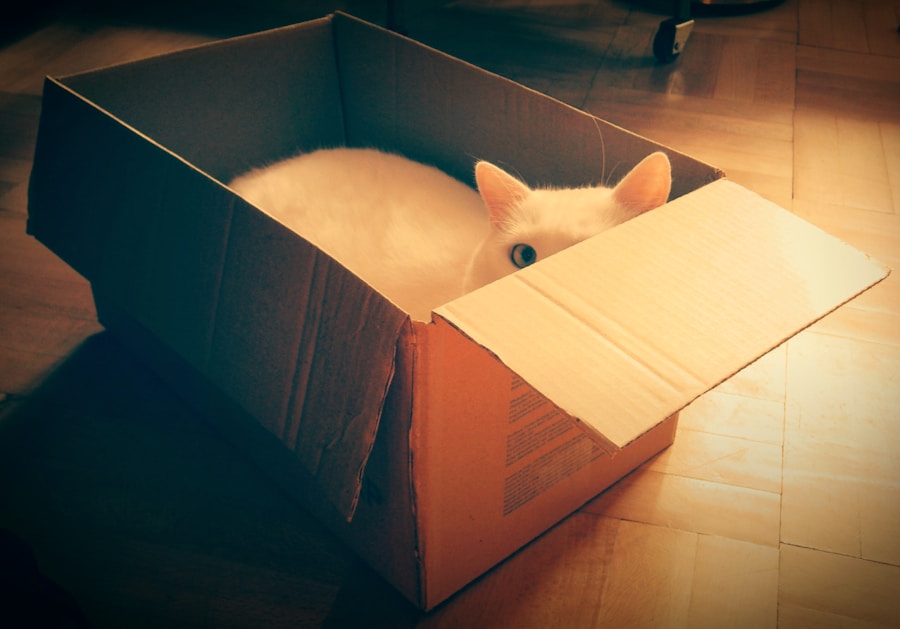Litter training is an essential part of raising a kitten, as it teaches them where to go to the bathroom and helps to keep your home clean and odor-free. By providing a designated area for your kitten to use the bathroom, you can prevent accidents and minimize the mess in your home. Additionally, litter training helps to instill good habits in your kitten from a young age, setting them up for success as they grow older. It is important to start litter training as soon as you bring your kitten home, as this will help them to quickly learn where they should go to the bathroom. By understanding the importance of litter training, you can set your kitten up for success and create a clean and comfortable environment for both you and your pet.
Litter training also plays a crucial role in maintaining the health and well-being of your kitten. By providing a clean and sanitary place for them to use the bathroom, you can help to prevent the spread of bacteria and parasites that can cause illness. Additionally, litter training can help to reduce stress and anxiety in your kitten, as they will have a designated area to relieve themselves without fear of reprimand. By understanding the importance of litter training, you can create a positive and healthy environment for your kitten to thrive in.
Choosing the Right Litter Box and Litter
When it comes to litter training, choosing the right litter box and litter is essential for success. There are many different types of litter boxes available, including open, closed, and self-cleaning options. It is important to choose a litter box that is large enough for your kitten to comfortably use, with low sides that are easy for them to access. Additionally, consider the location of the litter box, as it should be placed in a quiet and easily accessible area of your home. When it comes to choosing litter, there are many options available, including clumping, non-clumping, scented, and unscented varieties. It is important to choose a litter that is safe for your kitten and that they are comfortable using.
The type of litter you choose can also impact the success of your kitten’s litter training. Some kittens may have preferences for certain types of litter, so it may take some trial and error to find the right fit for your pet. Additionally, consider any potential allergies or sensitivities your kitten may have when choosing litter, as some varieties may cause irritation or discomfort. By choosing the right litter box and litter for your kitten, you can set them up for success in their litter training journey.
Introducing Your Kitten to the Litter Box
Introducing your kitten to the litter box is an important first step in their litter training journey. When you first bring your kitten home, show them where the litter box is located and encourage them to explore it. Place your kitten in the litter box after meals or naps, as they are more likely to need to use the bathroom at these times. Additionally, consider using a small amount of unscented litter in the box at first, as some kittens may be sensitive to strong scents. Be patient with your kitten as they become familiar with the litter box, and provide positive reinforcement when they use it correctly.
It is important to make the litter box a welcoming and comfortable space for your kitten. Keep the litter box clean and free of waste, as kittens are more likely to use it if it is sanitary. Additionally, consider placing the litter box in a quiet and private area of your home, away from loud noises or high-traffic areas. By introducing your kitten to the litter box in a positive and encouraging manner, you can help them to feel comfortable using it as they continue their litter training journey.
Teaching Your Kitten to Use the Litter Box
Teaching your kitten to use the litter box involves patience, consistency, and positive reinforcement. When you notice that your kitten needs to use the bathroom, gently place them in the litter box and encourage them to dig and explore. If they use the litter box correctly, provide praise and treats to reinforce this positive behavior. If your kitten has an accident outside of the litter box, do not scold or punish them, as this can create fear and anxiety around using the bathroom. Instead, clean up the mess and continue to encourage them to use the litter box in a positive manner.
It is important to establish a routine for your kitten’s bathroom habits, as this can help them to learn when and where they should go to the bathroom. Consider placing your kitten in the litter box after meals or playtime, as they are more likely to need to use the bathroom at these times. Additionally, keep an eye on your kitten’s body language and behavior, as this can help you anticipate when they need to use the bathroom. By teaching your kitten to use the litter box in a positive and consistent manner, you can help them to develop good bathroom habits as they grow older.
Troubleshooting Common Litter Training Issues
While most kittens will quickly adapt to using the litter box, there are some common issues that may arise during the litter training process. One common issue is aversion to the type of litter being used. Some kittens may be sensitive to certain textures or scents, so it may take some trial and error to find the right fit for your pet. If your kitten seems hesitant to use the litter box, consider trying a different type of litter to see if this resolves the issue.
Another common issue is anxiety or stress around using the litter box. This can be caused by a variety of factors, including changes in routine or environment. If your kitten seems hesitant or anxious about using the litter box, consider making small changes to create a more comfortable and welcoming space for them. This may include placing the litter box in a quieter area of your home or providing additional encouragement and praise when they use it correctly.
Maintaining a Clean and Odor-Free Litter Box
Maintaining a clean and odor-free litter box is essential for your kitten’s health and well-being. Regularly scoop out waste from the litter box and replace soiled litter with fresh material. Additionally, consider deep cleaning the litter box on a regular basis to remove any lingering odors or bacteria. It is important to use mild cleaning products when cleaning the litter box, as strong scents or chemicals can be off-putting for your kitten.
In addition to keeping the litter box clean, consider providing multiple litter boxes if you have multiple cats in your home. This can help to prevent territorial issues and ensure that each cat has access to a clean and comfortable place to use the bathroom. By maintaining a clean and odor-free litter box, you can create a positive and healthy environment for your kitten to thrive in.
Celebrating Success and Reinforcing Good Habits
As your kitten progresses through their litter training journey, it is important to celebrate their successes and reinforce good habits. When your kitten uses the litter box correctly, provide praise and treats to reward this positive behavior. Additionally, consider incorporating playtime or cuddle sessions after successful bathroom trips, as this can help to create positive associations with using the litter box.
It is also important to continue providing encouragement and support as your kitten grows older. If you notice any changes in their bathroom habits or behavior, consider consulting with a veterinarian to rule out any potential health issues. By celebrating success and reinforcing good habits, you can help your kitten develop lifelong positive bathroom habits and create a clean and comfortable environment for both you and your pet.
In conclusion, litter training is an essential part of raising a healthy and happy kitten. By understanding the importance of litter training, choosing the right litter box and litter, introducing your kitten to the litter box, teaching them how to use it, troubleshooting common issues, maintaining a clean and odor-free environment, and celebrating success and reinforcing good habits, you can set your kitten up for success in their bathroom habits. With patience, consistency, and positive reinforcement, you can create a clean and comfortable environment for both you and your pet.





